
CURATOR’s EYE
How is craft influencing contemporary painting?
Follow TRiCERA on Instagram and check out our creative artists
5%OFF & free shipping 1st purchase
FIRSTART5
10%OFF 2nd purchase after 1st purchase!
Welcome to TRiCERA
Hi there! We are pleased to have you here 🎉
Could you please describe yourself?
Guest
Munch's paintings, tools, and books were scattered all over Ekely's large villa. Many of the paintings were stored outdoors, leaving human and dog footprints on both prints and drawings. Even today, traces of water damage, bird droppings, and candle wax can still be seen in some of his paintings.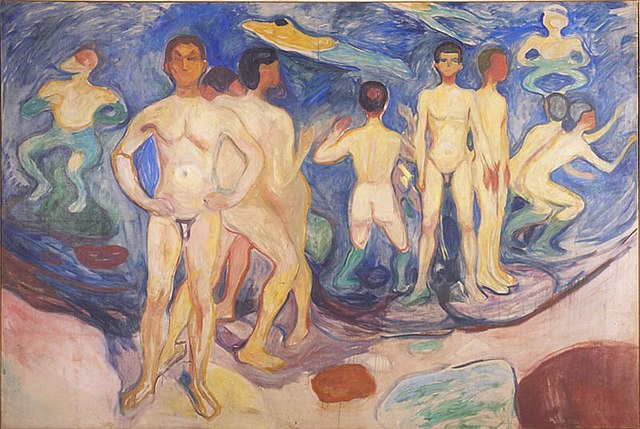
Bathing Young Men in the garden at Åsgårdstrand, 1904
At least as an idea.
In a draft (unpublished) of a letter to his friend, the Danish painter Jens Wilmsen, Munch wrote
If I had had a small, as yet undiscovered remote telephone that I carried in my pocket, you would have received a communication from me long ago."
Munch took great interest in technological innovations, acquiring film cameras, parographs (voice recorders), cameras, telephones, and radios.
Self-portrait in front of the House Wall, 1926
Although Munch attracted attention abroad, it seems that in Norway he was envious of his rival, the sculptor Gustav Vigeland. In his notebooks, Munch compares the public funding the two artists received.
He reads, "I read that millions of dollars were granted for Vigeland's so-called gifts. My work is as important to the art world and to the country as his. And it takes a lot of space and money for that work to be executed and shared."
Munch wrote in another note. 'Yes, we are all different. Look at how we are all up in arms against Vigelin. We just got spit from him and we are saving it for money."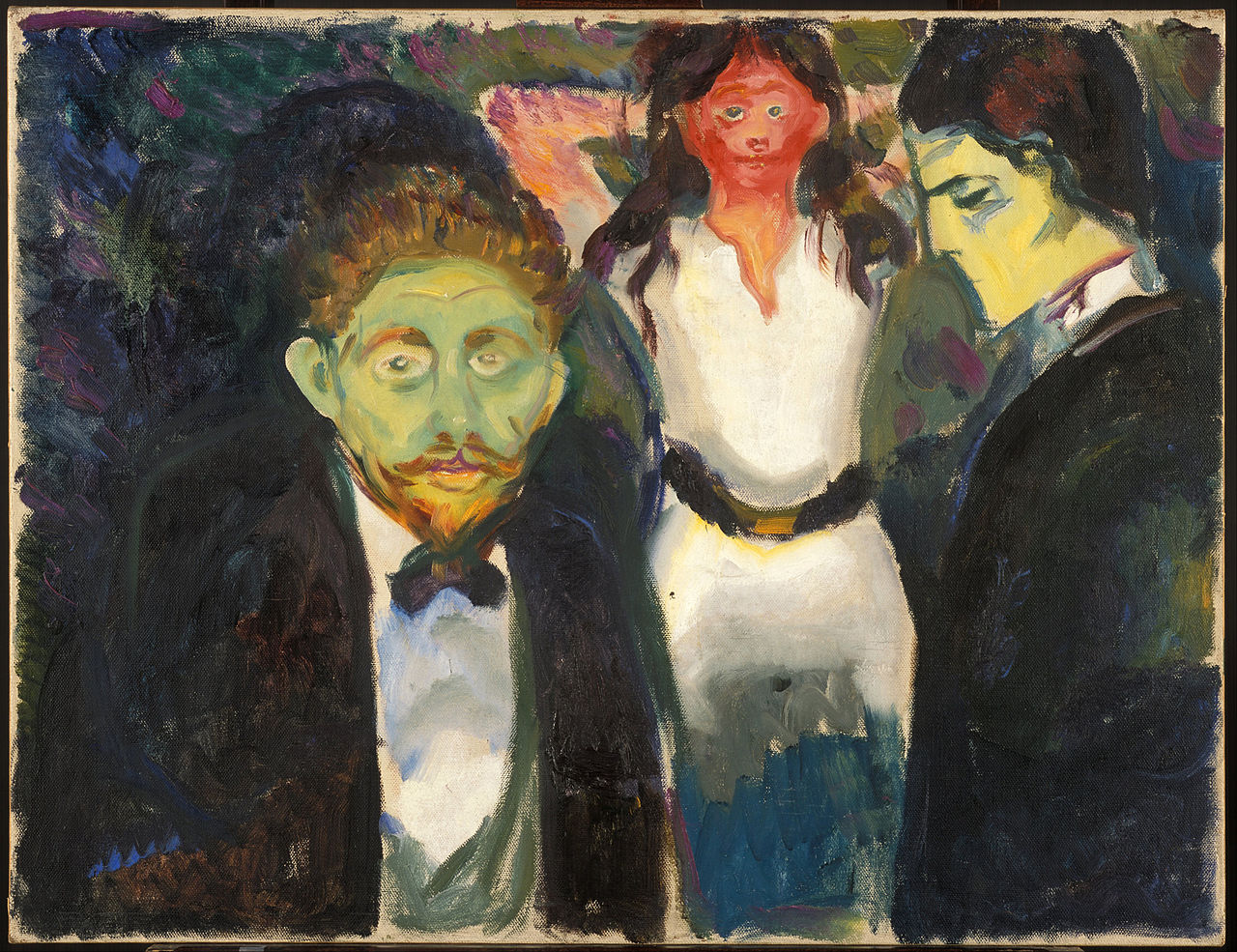
Jealousy, 1913
In his later years, Munch stopped eating meat. In a letter to his friend Jens Thijs around 1932-33, Munch wrote: "As a member of the Vegetarian Order, I am a vegetarian.
'As a member of the Vegetarian Order, I would like to say. Convert from cannibalism. Do not eat your uncles, aunts, and bright-eyed little cousins. Instead, eat lambs, lilies of the valley, lilies of the valley, grassy things. Cognac, Burgundy wine, and champagne are the blood of grapes."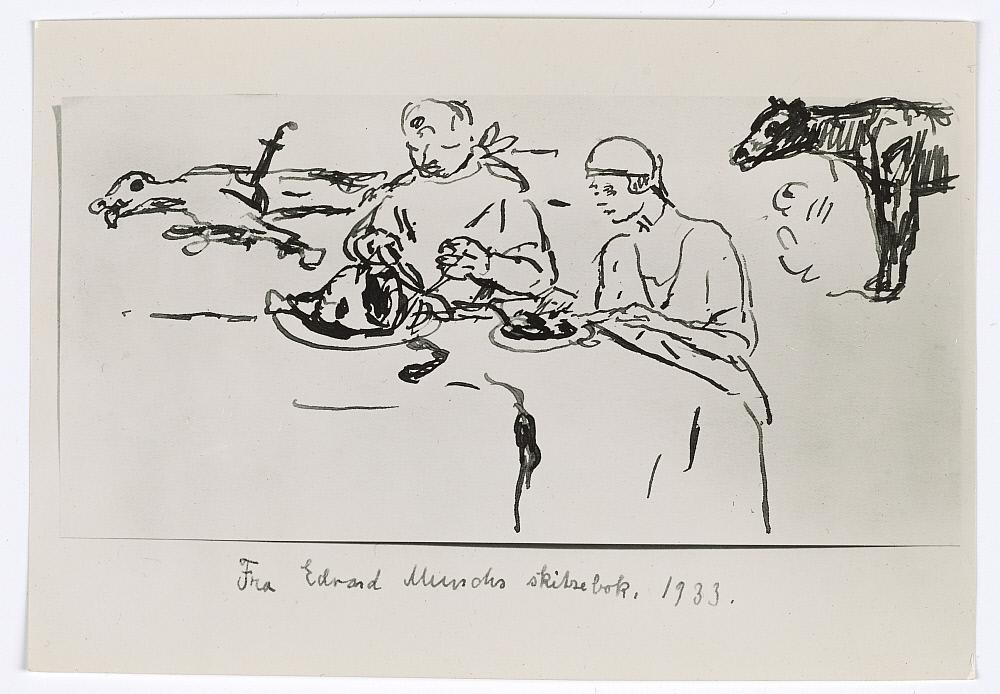
Drawing, 1933
Munch argued and bullied his previous friends, including the painter Christian Krogh and the writers Gunnar Heiberg and Sigurd Boetker, to the annoyance of many art critics, especially those of the daily newspaper Aftemposten. Munch wrote letters and notebooks of his dissatisfaction with others and drew caricatures that were scathingly critical of his enemies.
In a drawing from around 1908, Heiberg and Bødtker, both members of Christiania Bohemia, which Munch attended as a young man, are immortalized as emaciated poodles with a type of pig and a toad.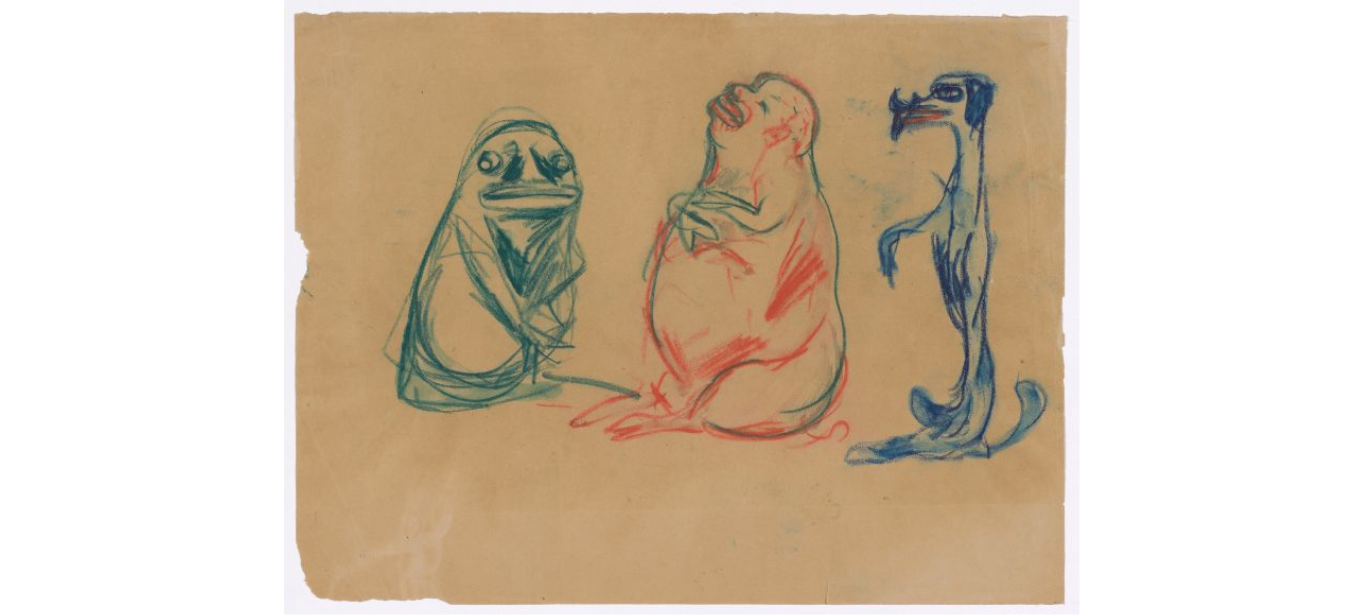
People and animals. bødtker, Heiberg and toad, 1908-09
An avid photographer, Munch left numerous photographs, many of them self-portraits. Often taken in profile, in front of a painting, in bed, or in the garden. 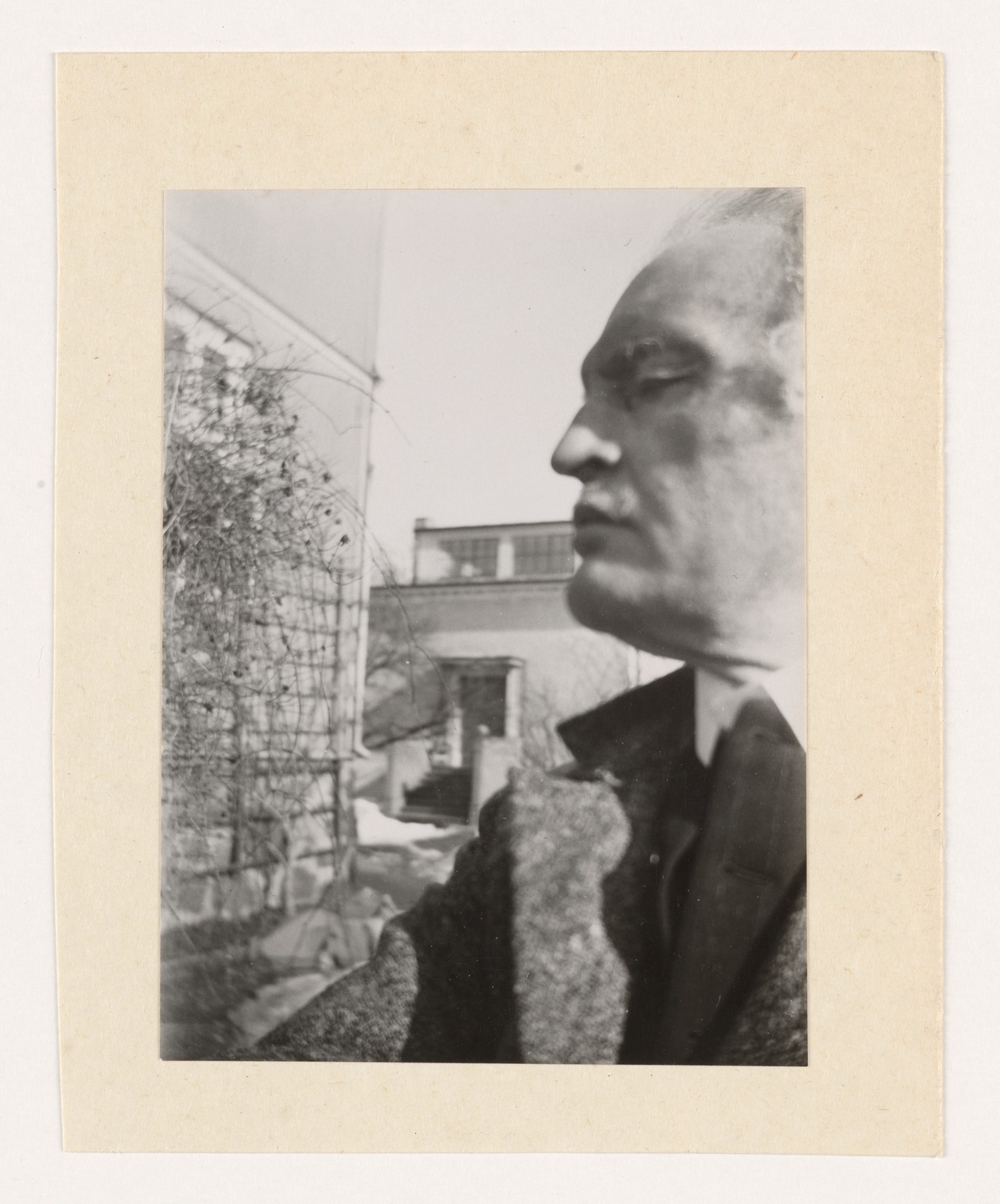
Self portrait in the garden, 1930
Occasionally, Munch would get into fights. Munch occasionally had fights, including with the painter Johannes von Ditten, whom he called "the bandit," the painter Ludwig Carsten, and the writer Andreas Haukland. In Germany, the attack almost ended in a pistol duel, which he later wrote: "Three days of attacks - in the evening.
"Three days of attacks - in the evening they broke the room.... .on the second day we had a senseless thing with an American doctor; on the third day a German officer and his foreign host clashed and threatened one of the Marines with their fists outside the hall. A brief exchange. Again denied access to the grounds."
Munch had a hard time letting go of the things that bothered him, including harassment and interference from the tax office.
He was also unhappy with his neighbors in Ekely, and harbored a special animosity toward his neighbor Axel Gunnerud and his dog Roll; around 1920, the painter reported Gunnerud to the police after the dog repeatedly tore the mailman's pants and bit Munch's leg. The neighbor was fined and Roll had to wear a muzzle. 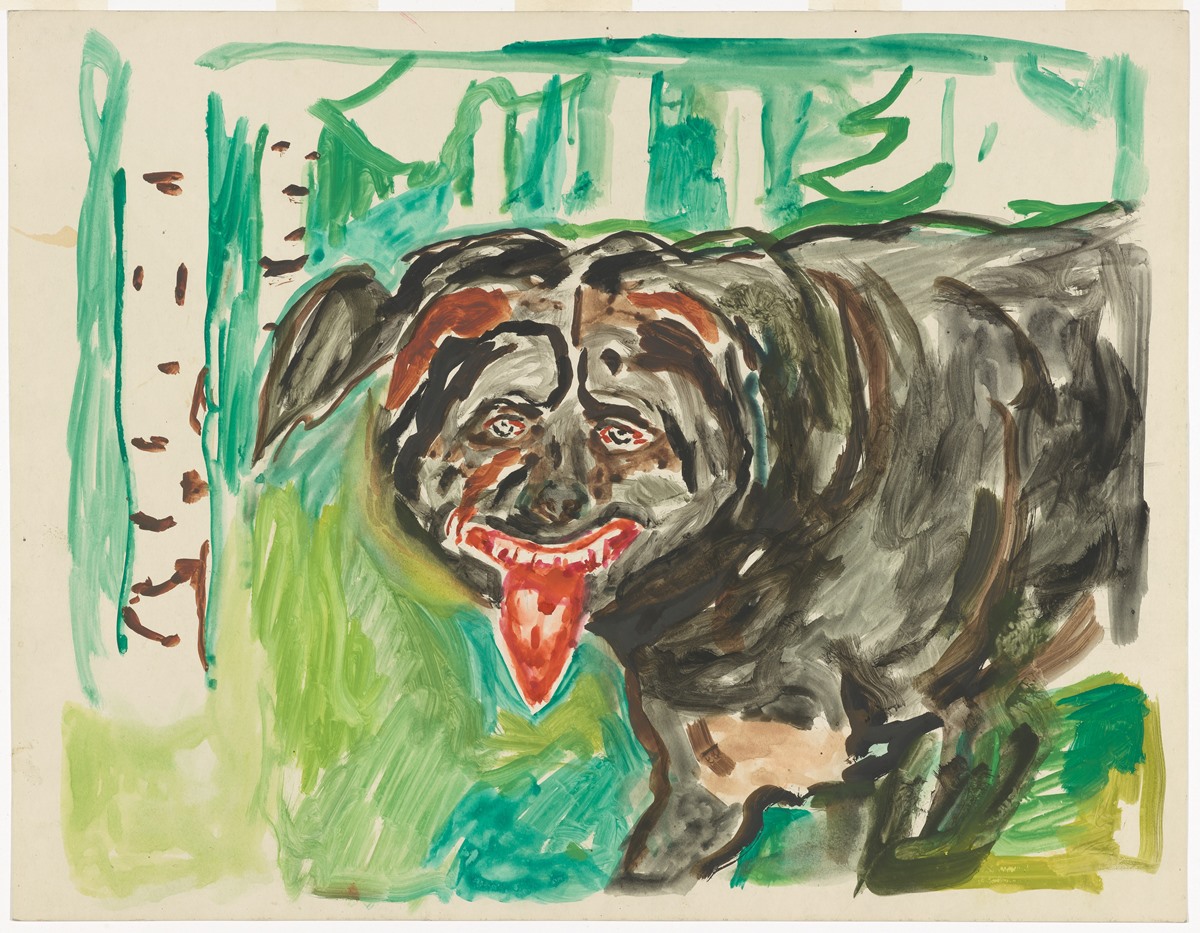
Angry dog, 1938-43
Munch once told his friend Christian Gierloff that his dog contained "the soul of an old sage. In the caption below a photograph of Phipps in "Self-Portrait" (1953), Gierloff quotes Munch as saying, "Munch was a great admirer of the old sage. Whenever Munch returned to Norway after years of living abroad, he always had one or several dogs. Phipps, a fox terrier, soon came to live with the somewhat more sedate Gordon Setter Boy and the slightly more brooding Sein Bernhard Bamse (Norwegian for teddy bear). Munch painted dogs, but first and foremost, the dogs were there to keep Munch company, and Boy would sometimes buy cinema tickets from his master. 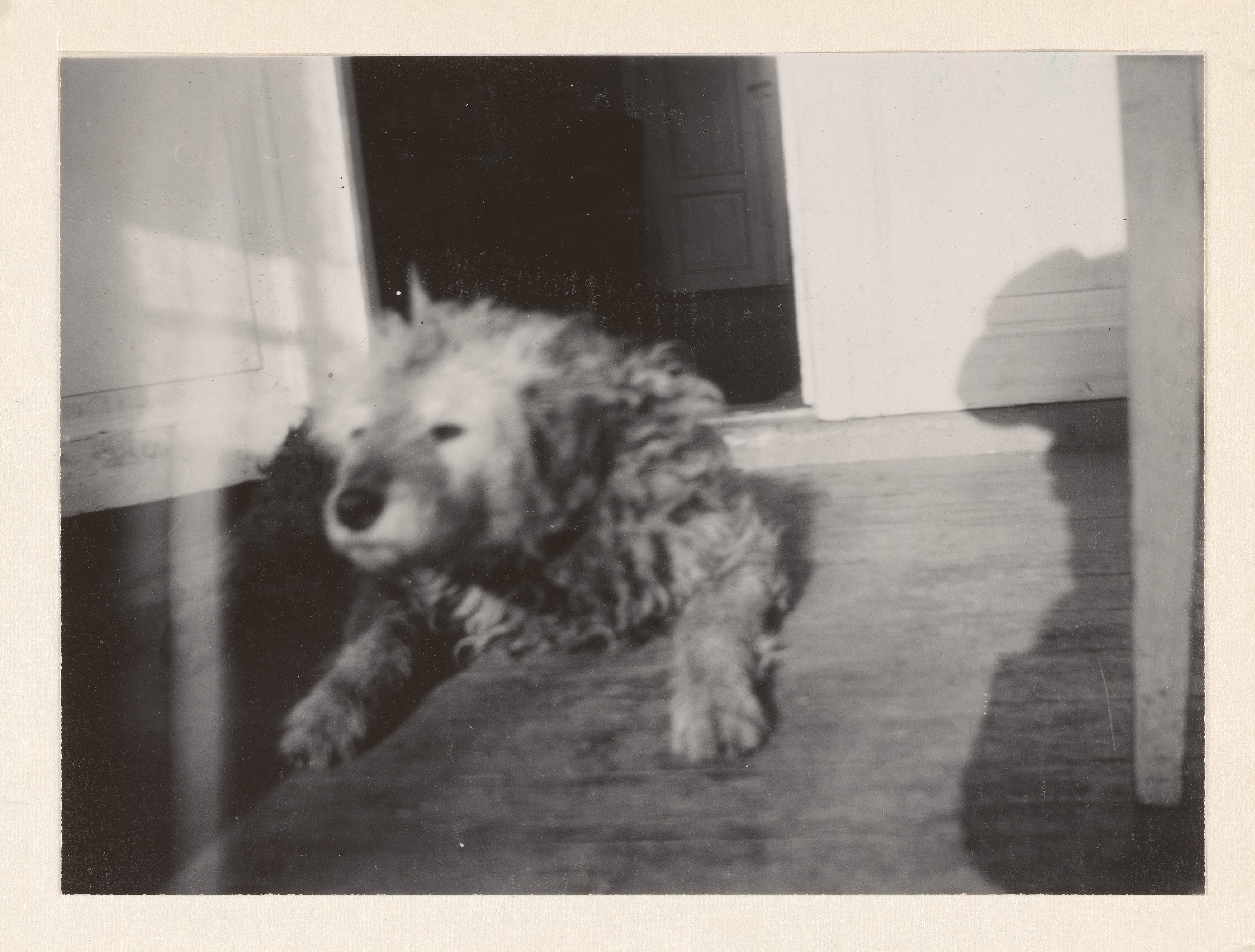
Munch's Dog "Fips", 1930
Munch owned several pistols and often used them to shoot targets, and on one occasion took a bullet in the finger; a 1905 note states that he shot a cigarette out of the mouth of fellow painter Ludwig Karsten. He declared, "Karsten did it bravely, but I am mad."

Writer
TRiCERA ART
Munch's paintings, tools, and books were scattered all over Ekely's large villa. Many of the paintings were stored outdoors, leaving human and dog footprints on both prints and drawings. Even today, traces of water damage, bird droppings, and candle wax can still be seen in some of his paintings.
Bathing Young Men in the garden at Åsgårdstrand, 1904
At least as an idea.
In a draft (unpublished) of a letter to his friend, the Danish painter Jens Wilmsen, Munch wrote
If I had had a small, as yet undiscovered remote telephone that I carried in my pocket, you would have received a communication from me long ago."
Munch took great interest in technological innovations, acquiring film cameras, parographs (voice recorders), cameras, telephones, and radios.
Self-portrait in front of the House Wall, 1926
Although Munch attracted attention abroad, it seems that in Norway he was envious of his rival, the sculptor Gustav Vigeland. In his notebooks, Munch compares the public funding the two artists received.
He reads, "I read that millions of dollars were granted for Vigeland's so-called gifts. My work is as important to the art world and to the country as his. And it takes a lot of space and money for that work to be executed and shared."
Munch wrote in another note. 'Yes, we are all different. Look at how we are all up in arms against Vigelin. We just got spit from him and we are saving it for money."
Jealousy, 1913
In his later years, Munch stopped eating meat. In a letter to his friend Jens Thijs around 1932-33, Munch wrote: "As a member of the Vegetarian Order, I am a vegetarian.
'As a member of the Vegetarian Order, I would like to say. Convert from cannibalism. Do not eat your uncles, aunts, and bright-eyed little cousins. Instead, eat lambs, lilies of the valley, lilies of the valley, grassy things. Cognac, Burgundy wine, and champagne are the blood of grapes."
Drawing, 1933
Munch argued and bullied his previous friends, including the painter Christian Krogh and the writers Gunnar Heiberg and Sigurd Boetker, to the annoyance of many art critics, especially those of the daily newspaper Aftemposten. Munch wrote letters and notebooks of his dissatisfaction with others and drew caricatures that were scathingly critical of his enemies.
In a drawing from around 1908, Heiberg and Bødtker, both members of Christiania Bohemia, which Munch attended as a young man, are immortalized as emaciated poodles with a type of pig and a toad.
People and animals. bødtker, Heiberg and toad, 1908-09
An avid photographer, Munch left numerous photographs, many of them self-portraits. Often taken in profile, in front of a painting, in bed, or in the garden. 
Self portrait in the garden, 1930
Occasionally, Munch would get into fights. Munch occasionally had fights, including with the painter Johannes von Ditten, whom he called "the bandit," the painter Ludwig Carsten, and the writer Andreas Haukland. In Germany, the attack almost ended in a pistol duel, which he later wrote: "Three days of attacks - in the evening.
"Three days of attacks - in the evening they broke the room.... .on the second day we had a senseless thing with an American doctor; on the third day a German officer and his foreign host clashed and threatened one of the Marines with their fists outside the hall. A brief exchange. Again denied access to the grounds."
Munch had a hard time letting go of the things that bothered him, including harassment and interference from the tax office.
He was also unhappy with his neighbors in Ekely, and harbored a special animosity toward his neighbor Axel Gunnerud and his dog Roll; around 1920, the painter reported Gunnerud to the police after the dog repeatedly tore the mailman's pants and bit Munch's leg. The neighbor was fined and Roll had to wear a muzzle. 
Angry dog, 1938-43
Munch once told his friend Christian Gierloff that his dog contained "the soul of an old sage. In the caption below a photograph of Phipps in "Self-Portrait" (1953), Gierloff quotes Munch as saying, "Munch was a great admirer of the old sage. Whenever Munch returned to Norway after years of living abroad, he always had one or several dogs. Phipps, a fox terrier, soon came to live with the somewhat more sedate Gordon Setter Boy and the slightly more brooding Sein Bernhard Bamse (Norwegian for teddy bear). Munch painted dogs, but first and foremost, the dogs were there to keep Munch company, and Boy would sometimes buy cinema tickets from his master. 
Munch's Dog "Fips", 1930
Munch owned several pistols and often used them to shoot targets, and on one occasion took a bullet in the finger; a 1905 note states that he shot a cigarette out of the mouth of fellow painter Ludwig Karsten. He declared, "Karsten did it bravely, but I am mad."

Writer
TRiCERA ART